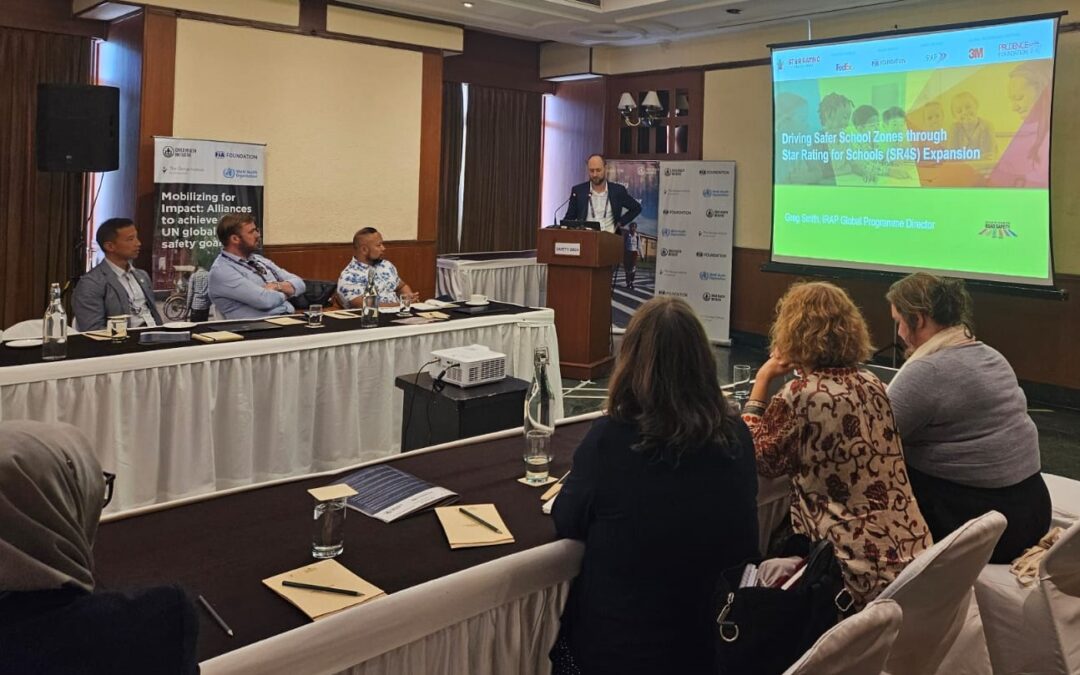iRAP participated in discussions with CHI partners at the pre-conference session. Images credit: FIA Foundation and iRAP
Road traffic injuries are the leading cause of death for children and young adults aged 5–29. High-risk roads significantly contribute to the problem. Star Rating for Schools (SR4S) is an award-winning evidence-based programme of tools, training and support to measure, manage and communicate the risk children are exposed to on a journey to school. SR4S helps guide strategic investments and advocacy efforts towards infrastructure upgrades, ultimately saving lives and preventing serious injuries. At the 15th World Conference on Injury Prevention and Safety Promotion (Safety 2024) from 2-4 September, iRAP and SR4S partners proudly shared success stories of how SR4S continues to enhance safe school journeys around the world, contributing to the fight against the leading killer of young people globally.
In the pre-conference session organized by the Child Health Initiative (CHI) titled “Challenges, Research Gaps, and Learnings from Implementation of Global Road Safety Programmes with Child Health Initiative partners,” iRAP Global Programme Director Greg Smith and Senior Road Safety Engineer Jigesh Bhavsar joined CHI partners, including UNICEF, Global Designing Cities Initiative, YOURS – Youth for the road safety, Global Alliance of NGOs for Road Safety, AIP Foundation, and Amend. During the session, iRAP highlighted collaborations between iRAP’s SR4S Programme and the CHI partners, including initiatives like the FIA Safe and Sustainable Mobility Grants Programme, AI&Me: Empowering Youth for Safer Roads, and the $2 million Google AI Grant. Key learnings, scaling pathways, and the roadmap to the 4th Global Ministerial Conference on Road Safety were also discussed. In addition, iRAP participated in a panel discussion on ensuring safe journeys to school. The panel focused on the importance of implementing 30 km/h speed limits in urban areas to protect children and create safer, more liveable cities.
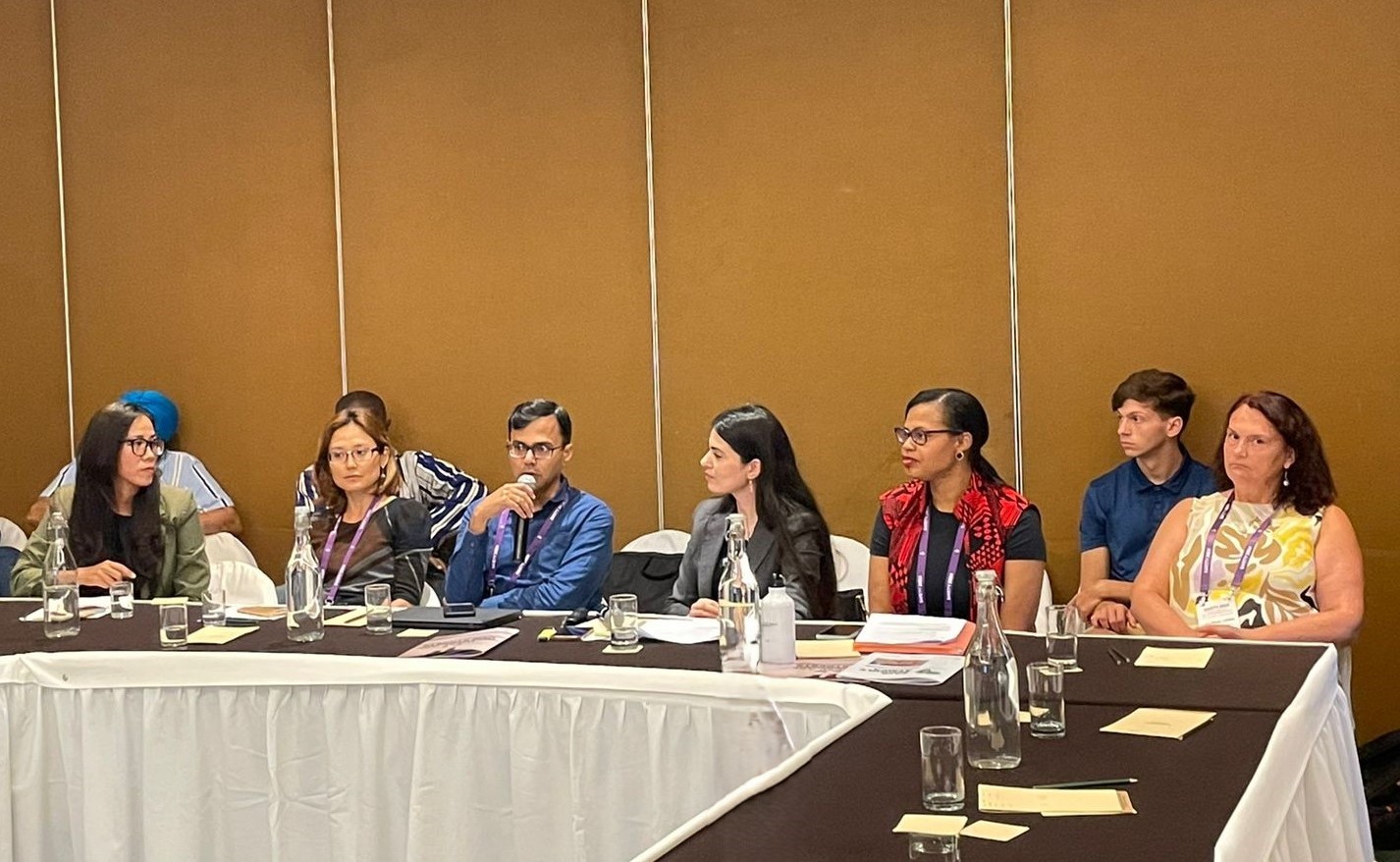
iRAP participated in discussions with CHI partners at the pre-conference session. Images credit: FIA Foundation and iRAP
SR4S was also mentioned in several abstracts. Harpreet Singh Dhunna, Founder President of Avoid Accident and accredited SR4S Quality Reviewer, presented a study “How safe and secure are our children? Road environment safety analysis of schools situated on highways in state of Punjab”. In 2022, India recorded 30,971 road crashes near schools, resulting in 12,296 deaths and 29,061 injuries. The study aimed to assess road safety hazards around schools in Punjab, India and implement solutions to improve safety for children. As part of the project, ten schools were selected and evaluated using the SR4S methodology. The study revealed significant safety concerns at the schools. Eight of the ten schools assessed had their main gates directly on highways, and many lacked essential safety features such as signboards, appropriate speed limits, and sidewalks. These deficiencies contributed to low star ratings for most of the schools. Through partnerships with stakeholders and targeted interventions, three schools have successfully improved their safety ratings.
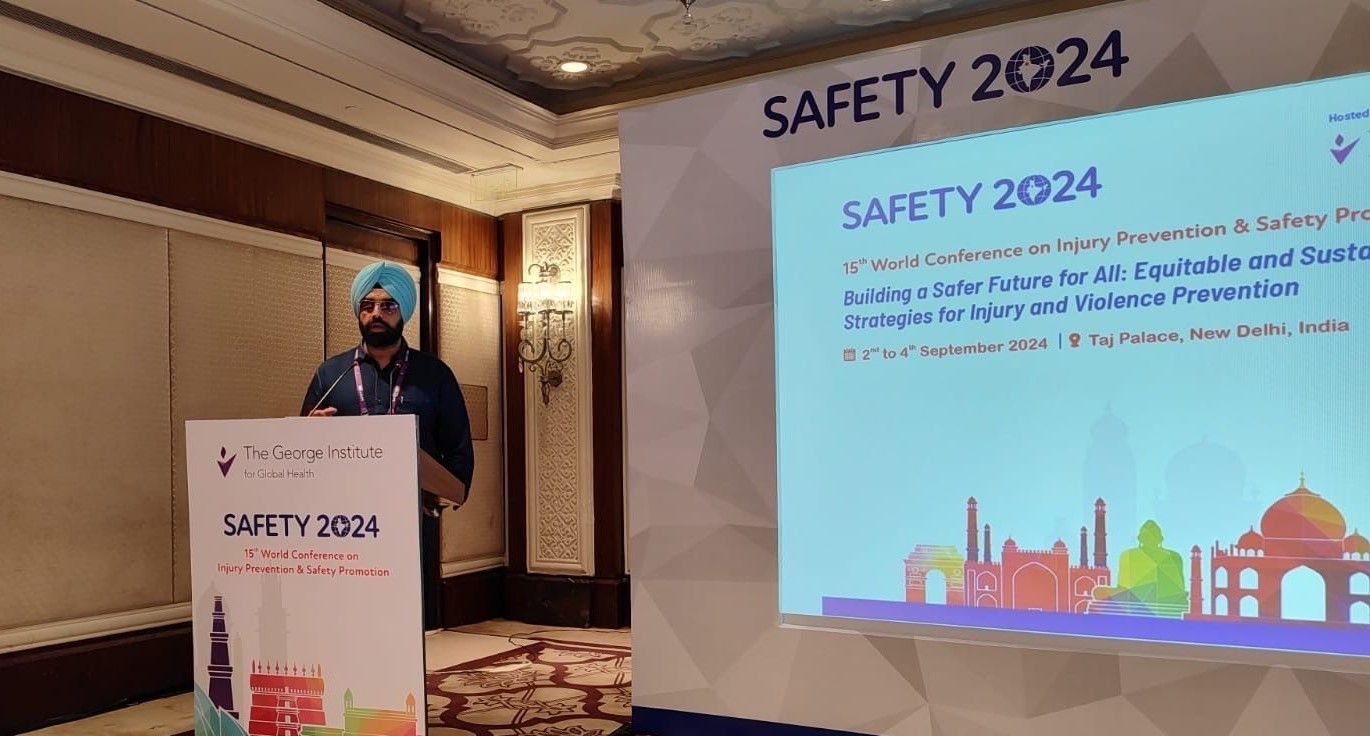
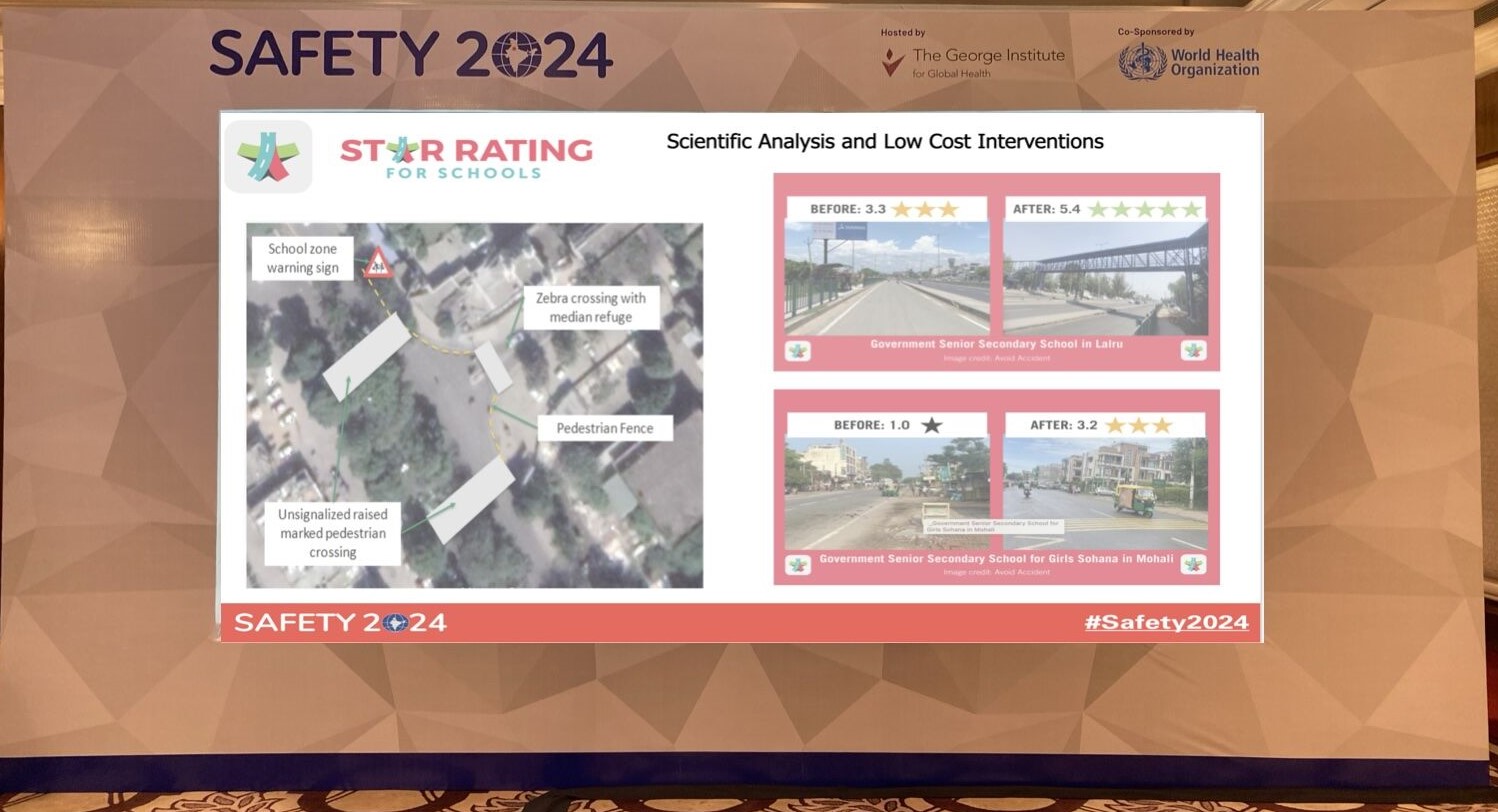
Harpreet Singh Dhunna presented his project which utilized SR4S to assess 10 schools and upgrade 3 of them. Images credit: Harpreet Singh Dhunna
In another parallel session, Greg Smith, iRAP Global Program Director, shared an abstract “Safety perception and safety measures: joint forces to improve safety for youth around schools”. Road crashes are the leading cause of death for children and adolescents aged 5-29. Many of these fatalities involve pedestrians, especially those traveling to and from school, due to inadequate road infrastructure. The study investigates how students’ perceptions of road safety, collected through the Youth Engagement App (YEA), compare to infrastructure assessments using the SR4S tool. Over 18,000 pieces of feedback from 1,800 students in three Vietnamese cities were used to identify high-risk areas for SR4S assessments at 106 school zones. The findings aim to assist decision-makers and urban planners in addressing discrepancies between perceived and actual safety, ultimately leading to improvements in road infrastructure for young people.
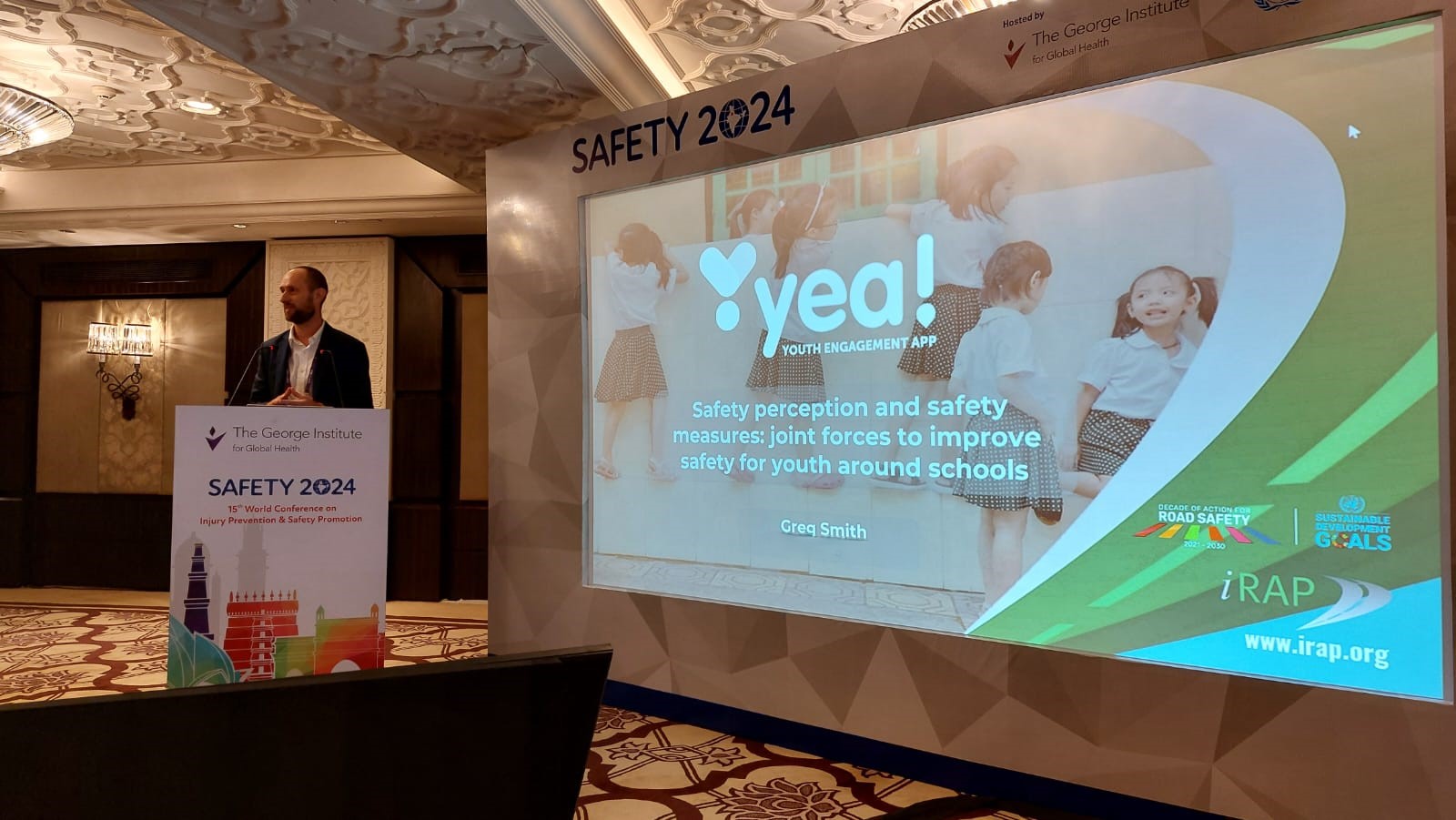
Greg Smith discussed how YEA and SR4S were utilized to gather student perceptions and assess road infrastructure in three cities in Vietnam. Image credit: iRAP
Furthermore, Sanjay Luitel and Hemant Tiwari from Safe and Sustainable Travel Nepal – SSTN introduced an abstract “Star rating for schools (SR4S): a new approach in enhancing road safety infrastructure in Nepal”. Nepal experienced approximately 2,883 road traffic fatalities last year, prompting an updated National Road Safety Action Plan (2021–2030) to enhance road safety. The plan emphasizes road safety audits and star ratings, including SR4S tool. The study focused on two schools near highways, both with high enrollments of students with visual and physical impairments. Guru Jajur Secondary School received a 1-star rating (lowest rating), while Shree Saraswati Secondary School was rated 2 stars. Proposed interventions include improved signage, speed limits, street lighting, speed calming measures and introducing crossing supervisors to increase school zone safety. Local authorities are collaborating to implement and monitor these safety measures.
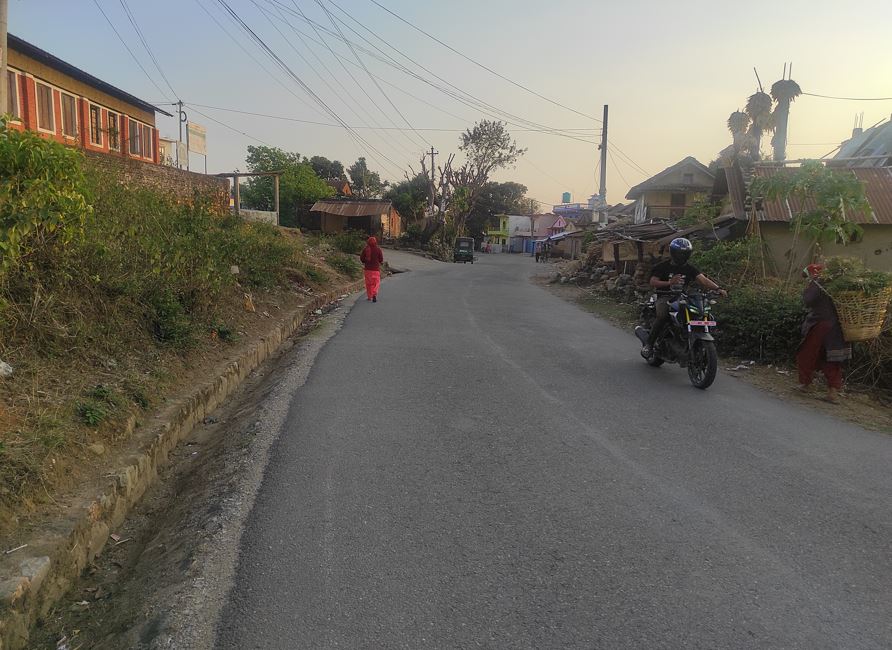
Guru Jajur Secondary School received a low star rating of 1.0-star. Image credit: SSTN
Lastly, Monica Nzanga, a Research Officer at Kamuzu University of Health Sciences (KUHeS), presented a study on child road safety and air quality in Malawi. It found that 97% of learners from six participating schools walk to school, mostly unsupervised, and are exposed to significant risks such as road traffic collisions and poor air quality. Road safety risks arise from schools being close to main roads, inadequate pedestrian infrastructure, students’ limited road safety knowledge, and reckless driving by public transport operators. Only one in ten school road points evaluated using SR4S received a 5-star rating (safest level). Air pollution from vehicles and waste also poses health risks. The study calls for coordinated interventions to enhance both the safety and cleanliness of school routes for student pedestrians.
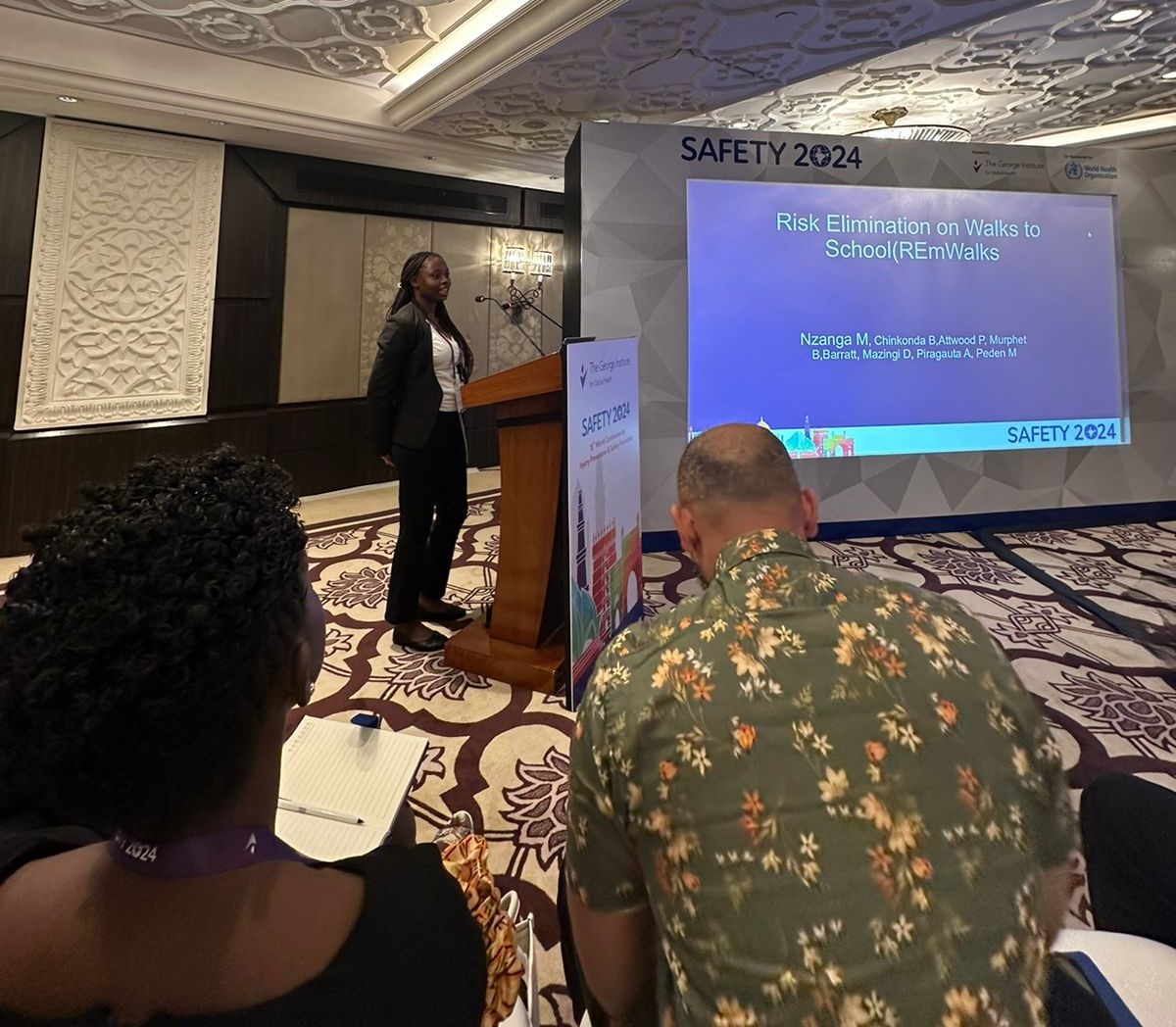
Monica Nzanga presented her research “Safer and cleaner walks to school in Malawi – addressing co-benefits”. Image credit: Monica Nzanga
Monica would like to acknowledge:
Collaborating partners:

Funding
The research was supported by the Medical Research Council [grant number MR/W004348/1].
Additional funding was received from the FIA Foundation for capacity development activities.
In general, with experience from school road safety programmes worldwide, SR4S is a valuable tool for identifying and addressing road safety risks around schools. It provides a framework for planning and implementing infrastructure improvements and supports equitable and sustainable strategies to prevent child road traffic injuries.

